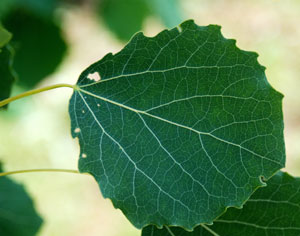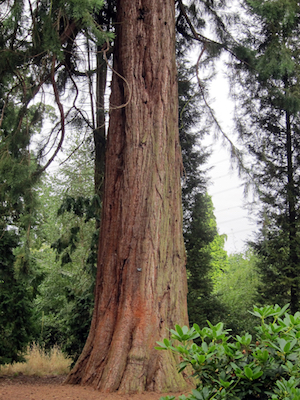Biofuels from trees.

A biofuel is a fuel (such as alcohol / ethanol) that is derived from plant or animal material (biomass) by a biological process such as fermentation or anaerobic digestion. Ethanol and methane are examples of biofuels that can be formed from a variety of sources of biomass.
Ethanol can be used as a fuel (in its pure form) for vehicles or used as a petrol additive to increase the octane ration / improve emissions. It is widely used in Brazil. Ethanol has been produced from a range of plant materials, for example, sweet sorghum, maize, wheat, sugar beet, sugar cane, Miscanthus (elephant grass) and wood pulp. Cellulosic ethanol is derived from biomass such as straw from crops and wood pulp - the latter is particularly rich in lignin and cellulose.
 Cellulose is a complex polymer (long chain molecule) made from sub-units of the sugar -glucose; it makes up some 40% + of wood.
Cellulose is a complex polymer (long chain molecule) made from sub-units of the sugar -glucose; it makes up some 40% + of wood.
Lignin (from the latin, Lignum = wood) is a complex substance, based on various aromatic rings, such as guaiacyl and syringyl. It makes up 25% or more of coniferous wood but the figure is a bit lower for wood from deciduous trees. Lignin is resistant to decay and microbial attack; consequently,it is slow to decay and contributes to the material that results in humus in the soil.
Lignin is found in all the woody tissues of a plant / tree but specifically the water conducting tissue of the xylem; its plays a pivotal role in a plant’s ability to grow - in some cases reaching great heights as is the case with the giant redwoods.
Biomass, such as wood pulp, has to be first treated to break the bonds that bind the cellulose and lignin intimately together. Then the material has to be subjected to hydrolysis - the process that releases sugar molecules (glucose) from the cellulose chains. The binding of the lignin to the cellulose often limits the amount of sugar that can be obtained from wood pulp.
A solution would be to create trees and hence wood pulp with less lignin, but this would result in weaker or stunted trees. An alternative approach has been adopted by researchers at the Brookhaven National Laboratory.  They have found a way to slightly alter the chemical make-up of the lignin produced in Aspen trees (leaf featured above, bark and stem adjacent). This has been done through the genetic manipulation of a gene responsible for the making of one of the enzymes responsible for lignin synthesis. Aspen trees with the changed enzyme had slightly less lignin but more importantly their lignin structure was different and their cellulose content was enhanced.
They have found a way to slightly alter the chemical make-up of the lignin produced in Aspen trees (leaf featured above, bark and stem adjacent). This has been done through the genetic manipulation of a gene responsible for the making of one of the enzymes responsible for lignin synthesis. Aspen trees with the changed enzyme had slightly less lignin but more importantly their lignin structure was different and their cellulose content was enhanced.
The wood pulp from these trees released 60% more sugar on hydrolysis; which in turn gave an enhanced yield of alcohol / ethanol. The changes in the lignin and cellulose content of these modified aspen trees did not affect their growth and form.
Comments are closed for this post.
